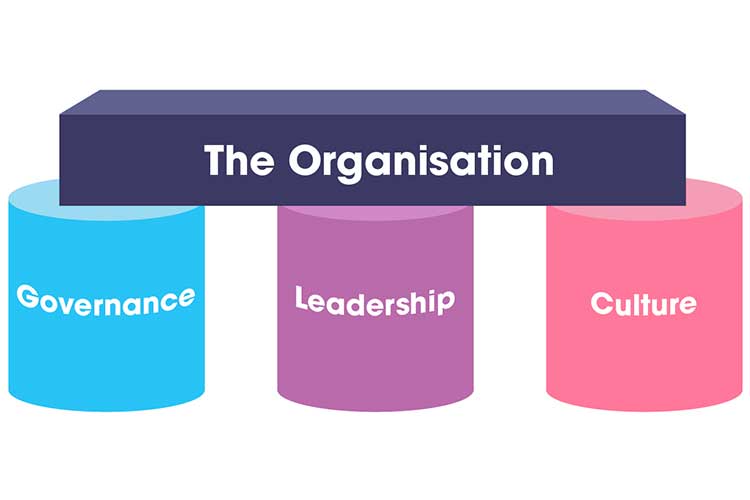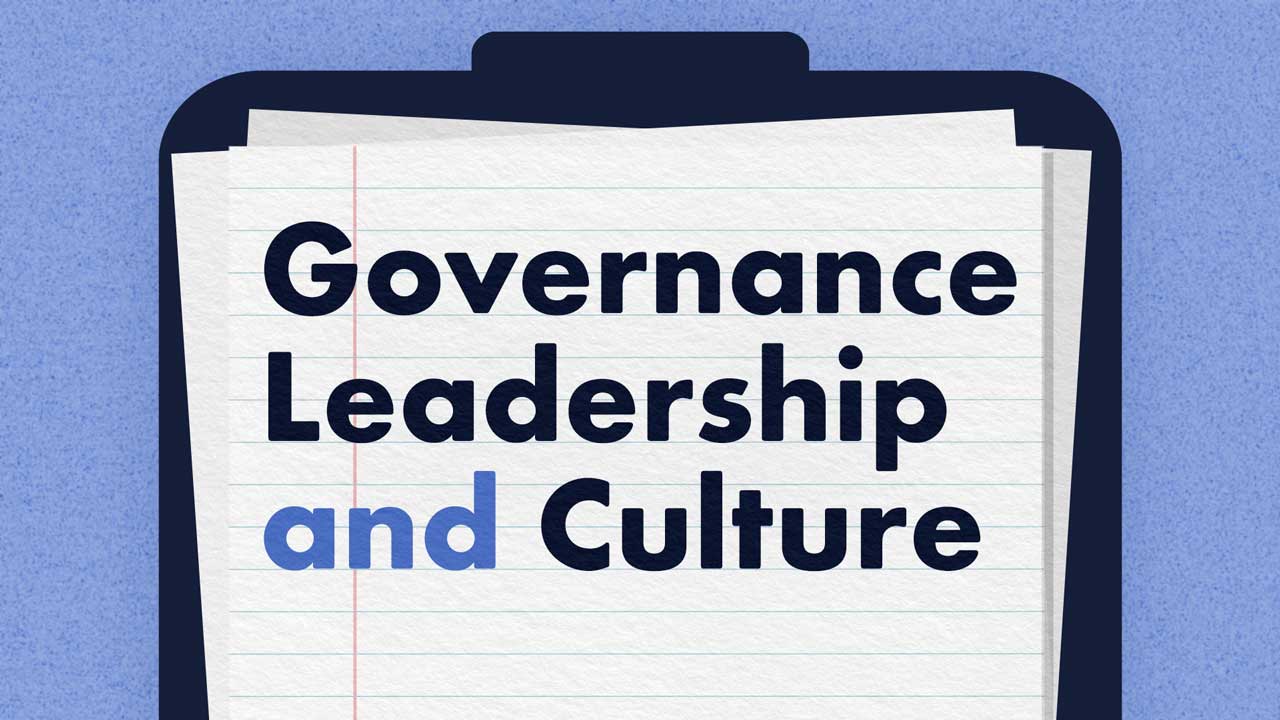Governance, leadership and culture drive the way a facility is managed and experienced by both staff and consumers. The effects of governance and leadership trickle from the top down and affect every aspect of an organisation, ultimately determining its overall culture.
Governance, leadership and culture relate to the National Safety and Quality Health Service Standards: Standard 1 Clinical Governance, in which:
‘Leaders of a health service organisation have a responsibility to the community for continuous improvement of the safety and quality of their services, and ensuring that they are person centred, safe and effective.’
(ACSQHC 2021)
What are Governance, Leadership and Culture?
Governance
Governance, in this context, is defined as the way organisations are managed at the highest level. Governance is not only about control and management but also relates to the specific systems and mechanisms that hold it to account (Cambridge Dictionary 2024a; Governance Institute of Australia 2019).
Leadership
Leadership is defined as both the position or fact of being the leader and a set of characteristics that make a good leader (Cambridge Dictionary n.d.b). This definition makes it clear that leadership is not just purely based on rank but is a practised skill.
Culture
An organisation's culture is its character and atmosphere. It is a combination of its values, attitudes, traditions, beliefs, interactions and behaviours, on both a visible and intrinsic level (ERC 2019).

What do Good Governance, Leadership and Culture Look Like?
All aspects of governance, leadership and culture should focus on improving patient safety and the quality of healthcare. Those in leadership positions are required to develop and use clinical governance systems to achieve this.

Broadly speaking, an organisation’s governance, leadership and culture can be measured by:
- How it carries out day-to-day responsibilities and treats its staff, patients/residents, consumers and the wider community
- The extent to which it responds to new ideas and encourages freedom in decision-making and personal expression of staff, patients/residents and other consumers
- The way in which power is distributed and how freely information flows down through the organisation’s hierarchy
- How committed staff appear to the collective goals and objectives of the organisation.
(Business Dictionary, as cited in Clark 2016)
The governing body of an organisation should create a culture of safety and quality improvement in partnership with patients, carers and consumers. Priorities and strategic directions for safe and high-quality healthcare should be communicated (ACSQHC 2021).

There is ample research to link high-quality clinical governance to health service performance and outcomes (ACSQHC 2021; Bismark & Studdert 2014).
Beyond what has been mentioned in this section, the NSQHS Standards recommend that through leadership, governance and culture, organisations should:
- Ensure they meet the specific health needs of Aboriginal and Torres Strait Islander people
- Support the organisation’s clinical governance framework
- Define roles and responsibilities for the governing body, management, clinicians and the workforce
- Monitor response to clinical incidents
- Review the organisation’s progress on safety and quality on an ongoing basis.
(ACSQHC 2021)
Test Your Knowledge
Question 1 of 3
Leadership is defined in this article as ...
Topics
Further your knowledge
References
- Australian Commission on Safety and Quality in Health Care 2021, National Safety and Quality Health Service Standards, 2nd edn, Australian Government, viewed 14 October 2024, https://www.safetyandquality.gov.au/publications-and-resources/resource-library/national-safety-and-quality-health-service-standards-second-edition
- Bismark, MM & Studdert, DM 2014, ‘Governance of Quality of Care: A Qualitative Study of Health Service Boards in Victoria, Australia’, BMJ Quality & Safety, vol. 23, no. 6, viewed 14 October 2024, https://qualitysafety.bmj.com/content/23/6/474
- Cambridge Dictionary 2024a, Governance, Cambridge Dictionary, viewed 14 October 2024, https://dictionary.cambridge.org/dictionary/english/governance
- Cambridge Dictionary 2024b, Leadership, Cambridge Dictionary, viewed 14 October 2024, https://dictionary.cambridge.org/dictionary/english/leadership
- Clark, I 2016, Organizational Culture, Atlas of Public Management, viewed 14 October 2024, https://www.atlas101.ca/pm/concepts/organizational-culture/
- ERC 2019, ‘Workplace Culture: What it is, Why it Matters, and How to Define it’, HR Insights Blog, 1 February, viewed 14 October 2024, https://www.yourerc.com/blog/post/workplace-culture-what-it-is-why-it-matters-how-to-define-it
- Governance Institute of Australia 2019, What is Corporate Governance?, online video, Governance Institute of Australia, viewed 14 October 2024, https://www.youtube.com/watch?v=QNYMsCpX7Rw
 New
New 

